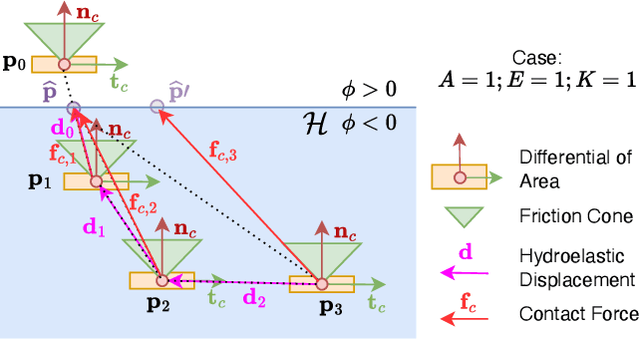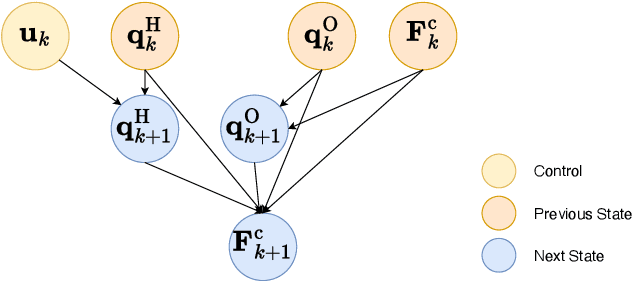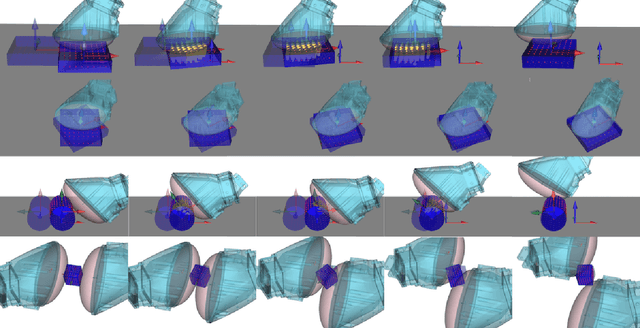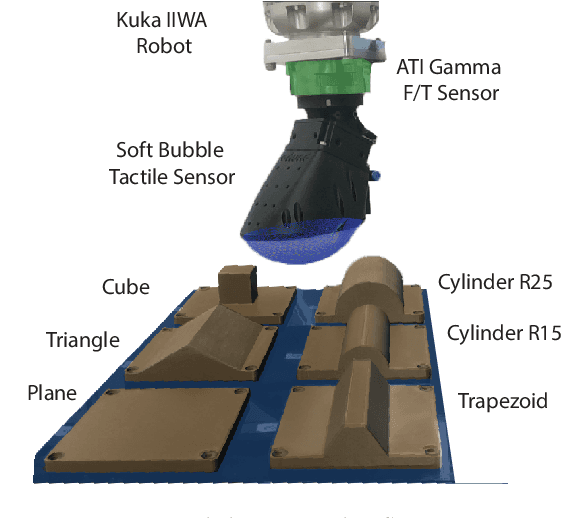An Dang
Hydrosoft: Non-Holonomic Hydroelastic Models for Compliant Tactile Manipulation
Sep 16, 2025



Abstract:Tactile sensors have long been valued for their perceptual capabilities, offering rich insights into the otherwise hidden interface between the robot and grasped objects. Yet their inherent compliance -- a key driver of force-rich interactions -- remains underexplored. The central challenge is to capture the complex, nonlinear dynamics introduced by these passive-compliant elements. Here, we present a computationally efficient non-holonomic hydroelastic model that accurately models path-dependent contact force distributions and dynamic surface area variations. Our insight is to extend the object's state space, explicitly incorporating the distributed forces generated by the compliant sensor. Our differentiable formulation not only accounts for path-dependent behavior but also enables gradient-based trajectory optimization, seamlessly integrating with high-resolution tactile feedback. We demonstrate the effectiveness of our approach across a range of simulated and real-world experiments and highlight the importance of modeling the path dependence of sensor dynamics.
meSch: Multi-Agent Energy-Aware Scheduling for Task Persistence
Jun 07, 2024Abstract:This paper develops a scheduling protocol for a team of autonomous robots that operate in long-term persistent tasks. The proposed framework, called meSch, accounts for the robots' limited battery capacity and the presence of a single charging station, and achieves the following contributions: 1) First, it guarantees exclusive use of the charging station by one robot at a time; the approach is online, applicable to general nonlinear robot models, does not require robots to be deployed at different times, and can handle robots with different discharge rates. 2) Second, we consider the scenario when the charging station is mobile and subject to uncertainty. This approach ensures that the robots can rendezvous with the charging station while considering the uncertainty in its position. Finally, we provide the evaluation of the efficacy of meSch in simulation and experimental case studies.
 Add to Chrome
Add to Chrome Add to Firefox
Add to Firefox Add to Edge
Add to Edge